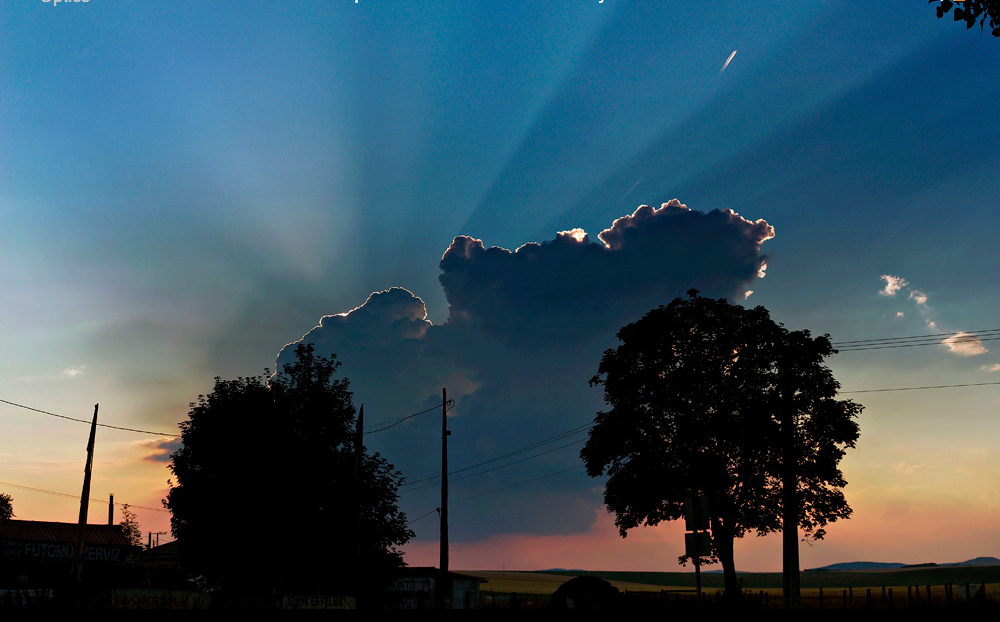Downward Rays
Downward Rays: A Deceptive Optical Phenomenon
Have you ever witnessed the breathtaking beauty of crepuscular rays, also known as "sunbeams," piercing through the clouds? These radiant beams of sunlight can create a mesmerizing spectacle, seemingly emanating from the heavens above. However, there is a fascinating twist to this atmospheric phenomenon that often goes unnoticed. Contrary to our perception, these rays are actually sloping downwards. In this article, we will explore the intriguing concept of downward rays and uncover the optical illusions that deceive our eyes.
Understanding the Illusion
When we gaze at crepuscular rays, it appears as though they are emanating from a single point on the horizon and extending upwards into the sky. However, this is a visual trick caused by perspective and the angle at which we observe them. In reality, these rays are slanting downwards, originating from the same source as their upward counterparts. The convergence of these rays creates an illusion of upward movement, leading us to perceive them as ascending beams of light.
Atmospheric Factors at Play
Several atmospheric factors contribute to the creation of downward rays. The primary cause is the presence of scattered particles in the air, such as dust, water droplets, or suspended aerosols. These particles serve as tiny reflectors, redirecting sunlight in various directions. When the sun is low on the horizon, its rays must pass through a greater thickness of atmosphere before reaching our eyes. This increased path length allows for more scattering to occur, resulting in a greater number of downward-angled rays being visible.
Optical Effects and Variations
The appearance of downward rays can vary depending on atmospheric conditions and geographical location. In some instances, the rays may appear as distinct parallel beams stretching across the sky, while in others, they may exhibit a fan-like pattern converging towards a single point. The exact nature of these optical effects is influenced by the size and shape of the scattering particles, as well as the angle at which sunlight interacts with them.
Atmospheric Optics and Downward Rays
The study of atmospheric optics delves into the science behind the behavior of light in our atmosphere. Downward rays are just one fascinating aspect of this field. Scientists and researchers use advanced instruments and mathematical models to understand the intricate processes that govern the formation and propagation of these optical phenomena. By studying downward rays, we gain valuable insights into the complex interactions between sunlight, particles, and atmospheric conditions.
Applications and Cultural Significance
The captivating allure of crepuscular rays has not gone unnoticed throughout history. These radiant displays have inspired artists, poets, and photographers to capture their ethereal beauty. Moreover, understanding the science behind downward rays has practical applications. Meteorologists can use the presence and characteristics of these rays to assess atmospheric conditions, such as the presence of aerosols or the potential for pollution. Additionally, astronomers can study the scattering properties of particles in the atmosphere to improve our understanding of celestial observations.
The Importance of Public Awareness
While downward rays may seem like a simple optical phenomenon, they serve as a reminder of the complexity and wonder of our natural world. By raising awareness about these deceptive illusions, we can foster a deeper appreciation for the intricate interplay between light and atmosphere. Encouraging public curiosity and engagement with atmospheric optics can inspire a sense of awe and curiosity about the world around us.
Conclusion
Next time you find yourself gazing up at the sky and marveling at the majesty of crepuscular rays, remember that appearances can be deceiving. Those seemingly ascending beams are, in fact, sloping downwards. Through the magic of perspective and atmospheric conditions, downward rays captivate our senses and leave us in awe of the hidden wonders that lie above. By exploring and understanding these optical illusions, we gain a deeper appreciation for the beauty and complexity of our atmosphere. So, the next time you witness these celestial beams, take a moment to ponder the fascinating science behind their enchanting display.

'Upwards' Crepuscular Rays - �gnes Ori imaged these in Hungary July 1st. In reality the rays are sloping downwards. Perspective and the angle at which they are viewed play tricks. ©�gnes Ori, shown with permission.

Note: this article has been automatically converted from the old site and may not appear as intended. You can find the original article here.
Reference Atmospheric Optics
If you use any of the definitions, information, or data presented on Atmospheric Optics, please copy the link or reference below to properly credit us as the reference source. Thank you!
-
<a href="https://atoptics.co.uk/blog/downward-rays/">Downward Rays</a>
-
"Downward Rays". Atmospheric Optics. Accessed on November 26, 2024. https://atoptics.co.uk/blog/downward-rays/.
-
"Downward Rays". Atmospheric Optics, https://atoptics.co.uk/blog/downward-rays/. Accessed 26 November, 2024
-
Downward Rays. Atmospheric Optics. Retrieved from https://atoptics.co.uk/blog/downward-rays/.